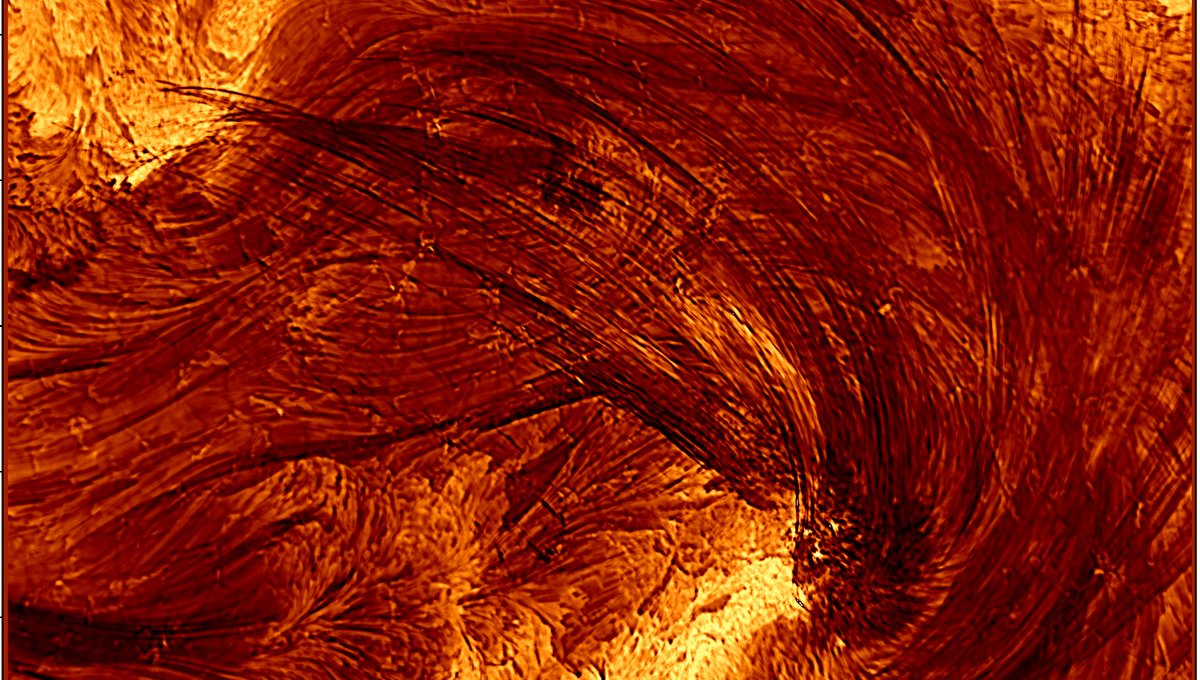-
Feed de Notícias
- EXPLORAR
-
Páginas
-
Blogs
-
Fóruns
Watch The Highest Resolution View Of A Solar Flare Down To An Incredible 21 Kilometers

Watch The Highest Resolution View Of A Solar Flare Down To An Incredible 21 Kilometers
The Daniel K. Inouye Solar Telescope has been a game-changer. It has delivered some of the highest resolution views we have ever taken of the Sun. Now, it has provided the highest resolution observations of coronal loops during a solar flare.
The rest of this article is behind a paywall. Please sign in or subscribe to access the full content. The solar flare in question was a respectably strong X1.3-class flare. It took place last year on August 8, 2024, at 20:12 UT as it was ramping up to the solar maximum. Coronal loops are arches of plasma that follow the magnetic lines of the Sun. As they twist and snap, the magnetic energy can heat up plasma to millions of degrees, producing a bright flare. The precise thickness of these loops was uncertain until now. The new observations suggest the loops averaged 48.2 kilometers (30 miles) in width and are perhaps as thin as just 21 kilometers (13 miles). “This is the first time the Inouye Solar Telescope has ever observed an X-class flare,” lead author Cole Tamburri, a graduate researcher at the University of Colorado Boulder, said in a statement. “These flares are among the most energetic events our star produces, and we were fortunate to catch this one under perfect observing conditions.” The coronal loop filaments stretching across the Sun, in a video sped up 100 times. Image Credit: NSF/NSO/AURA When the flare was emitted last August, the Sun was reaching its maximum, and Inouye was among the brand-new instruments studying this peak of activity. It more than delivered on its potential with these observations. “Before Inouye, we could only imagine what this scale looked like,” Tamburri explains. “Now we can see it directly. These are the smallest coronal loops ever imaged on the Sun.” “Knowing a telescope can theoretically do something is one thing,” Maria Kazachenko, a co-author of the study and National Solar Observatory scientist, notes. “Actually watching it perform at that limit is exhilarating.” The work is providing incredible insights into how these magnetic arcs are happening, as we can see in the video above, which has been sped up 100 times. The observations suggest that the loop images are singular structures, not bundles of smaller magnetic objects. “If that’s the case, we’re not just resolving bundles of loops; we’re resolving individual loops for the first time,” Tamburri adds. “It’s like going from seeing a forest to suddenly seeing every single tree.” “We’re finally peering into the spatial scales we’ve been speculating about for years,” says Tamburri. “This opens the door to studying not just their size, but their shapes, their evolution, and even the scales where magnetic reconnection—the engine behind flares—occurs.” The study is published in The Astrophysical Journal Letters..gif)


